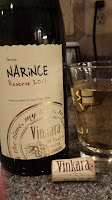WineCompass
Focusing on the world of wines, beer, and spirits that we experience through our travels at WineCompass.com and theCompass Craft Beverage Finder.
Vinkara Offers Two Tasty Turkish Wines to the U.S. Market

Wines from Turkey are getting more play in the U.S. market and one of these producers is¬†Vinkara. This winery focuses on indigenous grapes grown on their estate in Central Anatolia, a region some consider the birthplace of wine. According to Vinkara’s website, wine residue has been dated to the Hittites who lived in the region 15,000 years ago. And auxiliary evidence is that there are 1,200 indigenous grape varieties from Central Anatolia. The G√ľrsel family began operations in 2003 with Marco Monchiero an Italian Oenologist, joining the team in 2008. The winery’s Central Anatolia estate is specifically located in the Kizhrmak River Basin near the village of Kalecik. At 2,000 feet above seal level, there is plenty of nighttime cooling to retain acids, little rainfall and sandy and limestone soils. This property quite obviously focuses on¬†Kalecik Karasi, a red wine grape which originated in the area.¬† A second indigenous grape they produce is the white wine grape¬†Narince¬†which originated from the Tokat region to the north.
The Erbaa region within the Tokat province has a similar altitude as Kalecik with porous sandy and clay soils.  The winery sent me to of these wines to sample and in general were quite pleasing. The downside is that they are both on the high SRP side for a Turkish wine but worth a look for the adventurous.
Narince Reserve 2012 ($27, 13.5%) Рaged for 14 months in on lees in small Burgundy barrels and then aged a further six months in bottle before release. The nose is very floral followed by a creamy grapefruit profile, some minerals, and decent acids.
Kalecik Karasi Reserve 2012 ($25, 13.5%)  Рalso aged for 14 months in on lees in small Burgundy barrels and then aged a further six months in bottle before release. The wine is very fruit forward, with an herbaceous cough drop like cherry flavor. But I use that descriptor in a positive way. The tail is easy and approachable.






